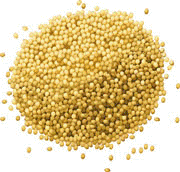International Sorghum and Millet Collaborative Research Support Program (INTSORMIL CRSP)
Date of this Version
4-21-2009
Document Type
Article
Citation
INTSORMIL Report No. 20, April 21, 2009
Abstract
Global losses due to grain mold are estimated to be $130 million annually. Sorghum grain mold is caused by a complex of fungal species, the most important being Fusarium thapsinum and Curvularia lunata. An additional 25 fungal genera are secondary invaders. Grain mold reduces the quantity of food available, as the fungus consumes a portion of the grain, and reduces the quality and economic value of what remains by producing pigments and toxins that make the grain less palatable and nutritious. Fusarium spp. and the secondarily invading Aspergillus spp. may produce toxins such as aflatoxins (a highly carcinogenic and toxic secondary metabolite chemical), fumonisins and moniliformin which reduce the quality of the grain as a food/feed source. The toxins are associated with a variety of human and animal health problems including acute toxicity and death, birth defects, increased disease susceptibility and reduced growth in infants and children. Fungi that cause grain mold are also linked with stand establishment problems because the infected seeds produced often germinate poorly and the seedlings may be killed by the fungi that accompanied the seed.
Grain mold on sorghum reduces yield and seed quality as it discolors both the inside and outside of the grain (see photos). Effects range from cosmetic deterioration of the pericarp to substantial deterioration of the endosperm and embryo which reduces the protein content and the acceptability by food and feed processors. There is a distinct diversity in the appearance of the various grain mold pathogens as indicated in the photo below. The genetic diversity complicates the breeding of sorghum for resistance to the fungi.


